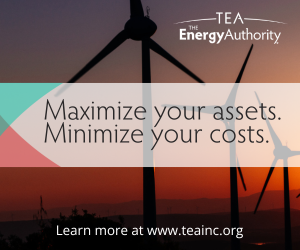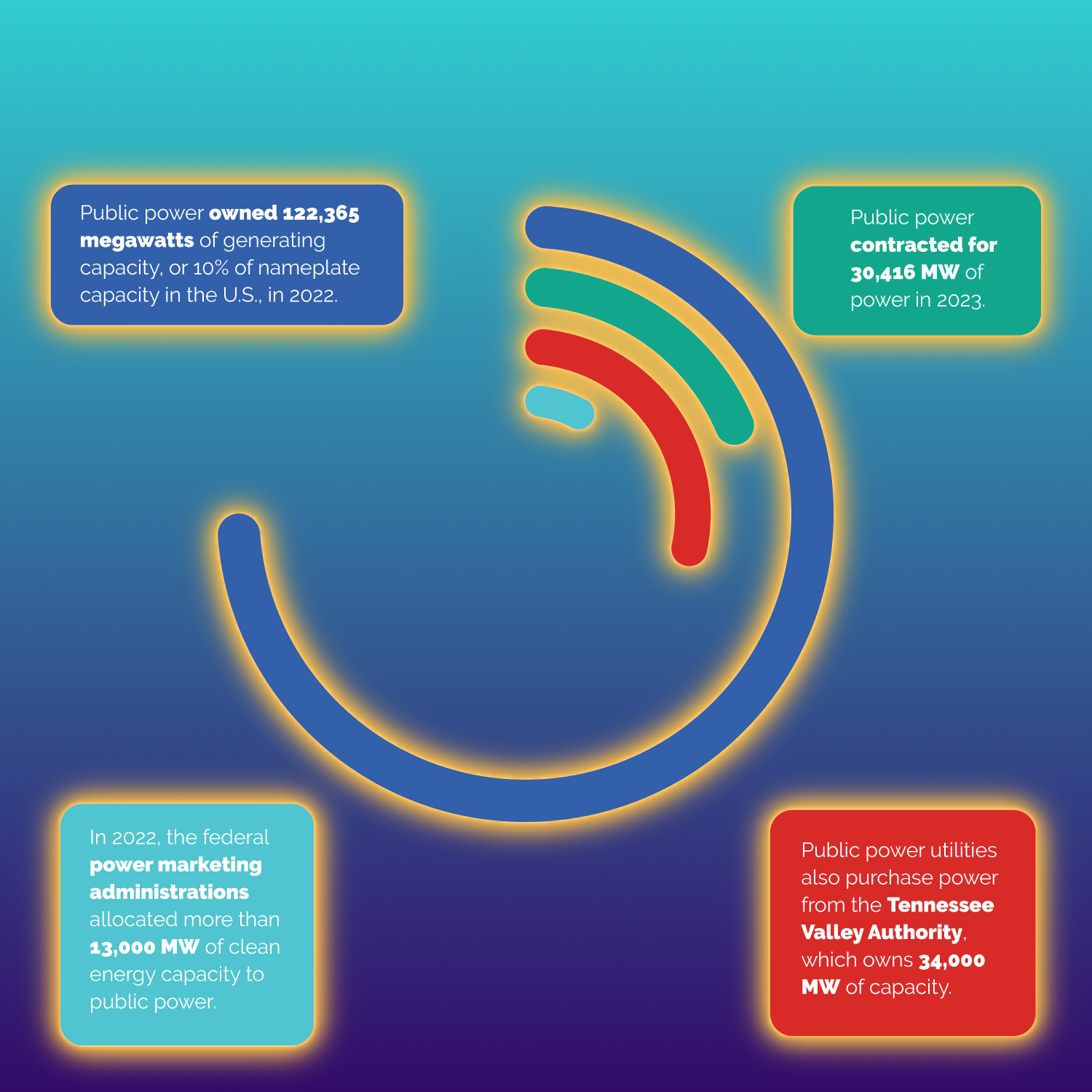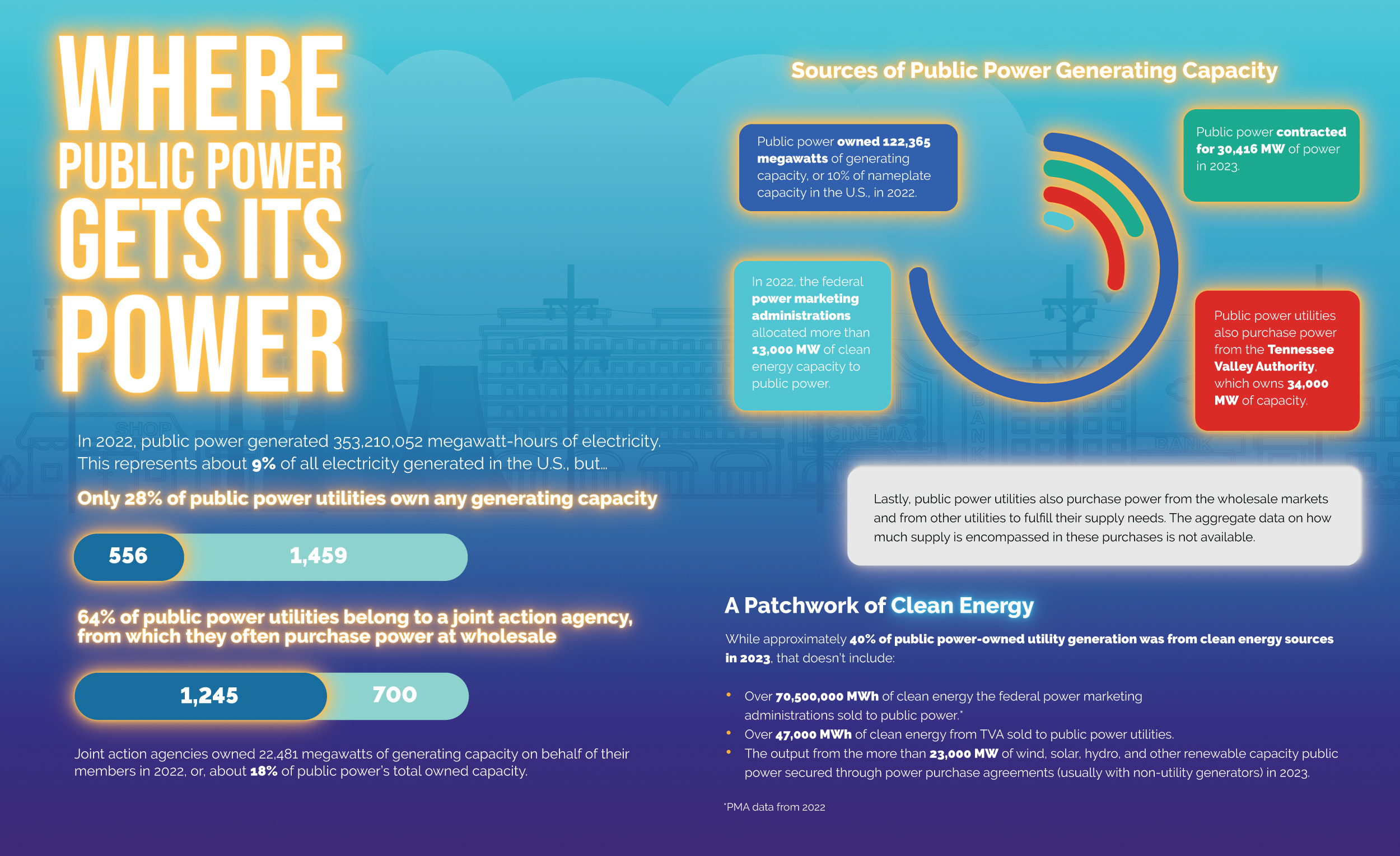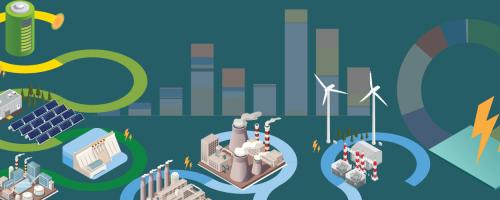In 2022, public power generated 353,210,052 megawatt-hours of electricity. This represents about 9% of all electricity generated in the U.S., but…
Only 28% of public power utilities own any generating capacity.

64% of public power utilities belong to a joint action agency, from which they often purchase power at wholesale.

Joint action agencies owned 22,481 megawatts of generating capacity on behalf of their members in 2022, or, about 18% of public power’s total owned capacity.

Sources of Public Power Generating Capacity

- Public power owned 122,365 megawatts of generating capacity, of 10% of nameplate capacity in the U.S., in 2022.
- Public power contracted for 30,416 MW of power in 2023.
- Public power utilities also purchase power from the Tennessee Valley Authority, which owns 34,000 MW of capacity.
- In 2022, the federal power marketing administrations allocated more than 13,000 MW of clean energy capacity to public power.
- Lastly, public power utilities also purchase power from the wholesale markets and from other utilities to fulfill their supply needs. The aggregate data on how much supply is encompassed in these purchases is not available.
A Patchwork of Clean Energy
While approximately 40% of public power-owned utility generation was from clean energy sources in 2023, that doesn’t include:
- Over 70,500,000 MWh of clean energy the federal power marketing administrations sold to public power.*
- Over 47,000 MWh of clean energy from TVA sold to public power utilities.
- The output from the more than 23,000 MW of wind, solar, hydro, and other renewable capacity public power secured through power purchase agreements (usually with non-utility generators) in 2023.
*PMA data from 2022




